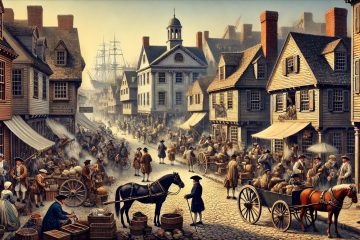History of Business in America: From the First Stock Exchanges to the End of the Civil War
The period from 1790 to 1865 in America was marked by significant developments in business and the overall economy, including the founding of the first stock exchanges. Here’s a summary of the key events and trends during this era:
Early Industrialization (1790s-1830s):
The late 18th century saw the emergence of textile mills and other small-scale manufacturing in the northeastern United States, driven by innovations like the cotton gin (1793) and the development of water-powered machinery. The embargo and trade restrictions during the War of 1812 encouraged domestic manufacturing as the country sought to become more self-sufficient.
Transportation Revolution (early 19th century):
The construction of canals (e.g., Erie Canal, completed in 1825) and the expansion of the road network (National Road, established in the 1810s) facilitated the movement of goods and people, fostering economic growth.
Founding of the First Stock Exchanges »
The Philadelphia Stock Exchange, founded in 1790, was one of the earliest organized securities markets in the United States. It primarily dealt with government and bank securities. The New York Stock Exchange (NYSE) was established in 1792 when 24 stockbrokers signed the Buttonwood Agreement under a buttonwood tree on Wall Street. It became a central hub for trading stocks and securities.
Rise of Cotton and Slavery:
The cotton gin, invented by Eli Whitney, revolutionized cotton production, making it the dominant cash crop in the South. This fueled the expansion of plantation-based agriculture and the demand for enslaved labor.
Financial Innovations (early to mid-19th century):
The establishment of the first national bank (First Bank of the United States) in 1791, followed by the Second Bank of the United States in 1816, provided a stable currency and promoted economic stability. The issuance of banknotes, private and state-chartered banks, and speculation in land and commodities contributed to economic growth but also led to periodic financial panics.
Westward Expansion »
The acquisition of new territories through treaties, purchases (e.g., Louisiana Purchase in 1803), and wars (e.g., Mexican-American War in the 1840s) expanded the nation’s borders and created opportunities for business expansion.
Transportation Advances (mid-19th century):
The completion of the transcontinental railroad in 1869 revolutionized transportation and allowed for the rapid movement of goods, people, and capital across the continent.
Impact of Slavery and the Civil War (1861-1865):
The issue of slavery and states’ rights led to the American Civil War. The conflict disrupted the economy, particularly in the South, where agriculture and slave labor were central to the economy. The war also spurred industrialization in the North, with increased demand for weapons, clothing, and other wartime supplies.
The Second Great Awakening (Peak 1820s and 1830s):
Marked a significant departure from the religious landscape of the time, emphasizing emotional and experiential faith, individual salvation, and the call for personal moral and social reform. It was characterized by enthusiastic camp meetings, passionate itinerant preachers, and the rapid spread of new religious denominations. The Second Great Awakening had a profound impact on American society, fostering a spirit of social activism and contributing to various reform movements, such as abolitionism, women’s suffrage, and temperance.
Economic Growth and Diversification:
Overall, the period from 1790 to 1865 witnessed significant economic growth and diversification, with manufacturing, agriculture, trade, and finance all playing crucial roles in shaping the American economy.
Main Image Source: Wikimedia Commons Other: NYPL – Public Domain



